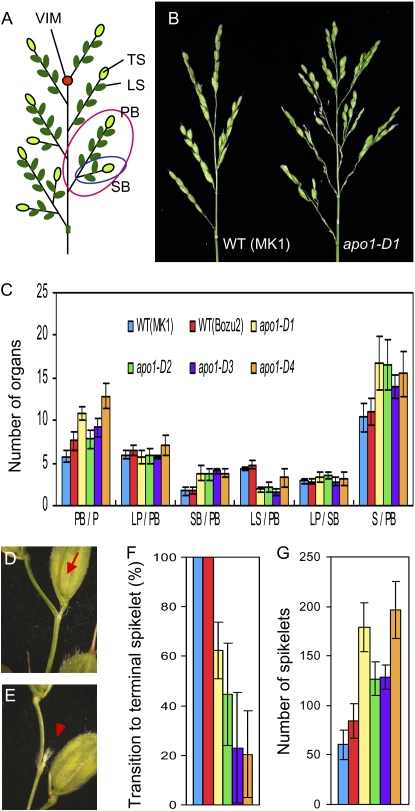Figure 4.
Inflorescence phenotypes of apo1-D mutants. A, A schematic representation of the rice inflorescence. VIM, Vestige of IM; TS, terminal spikelet; LS, lateral spikelet; SB, secondary rachis branch. Red and blue open circles indicate a primary branch and a secondary branch, respectively. B, Inflorescences of wild-type (WT; ‘MK1’, left) and apo1-D1 (right). C, Number of lateral organs in the inflorescence. apo1-D1, apo1-D2, and apo1-D3 were derived from ‘MK1’ and apo1-D4/Ur1 was from ‘Bozu2’. P, Panicle; LP, lateral primordium; SB, secondary rachis branch; LS, lateral spikelet; and S, total spikelet. D and E, Close-up view of branch apex. A terminal spikelet (arrow) is produced at the top of PBs in wild-type inflorescence (D) but a vestige of the rachis branch meristem (arrowhead) is observed in apo1-D mutants (E). F, Frequency of terminal spikelet formation on the PB. G, Total number of spikelets in an inflorescence. Vertical bars in C, F, and G indicate sem; n = 10 for wild type, apo1-D1, -D2, -D3, and -D4.

